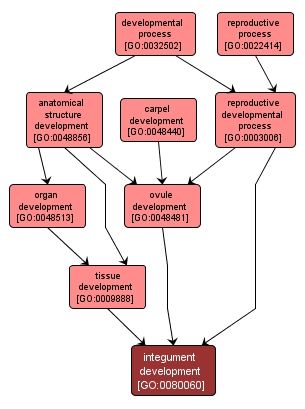| Desc: |
The process whose specific outcome is the progression of the integument over time, from its formation to the mature structure. Integument is one of the layers of tissue that usually covers the ovule, enveloping the nucellus and forming the micropyle at the apex. |














